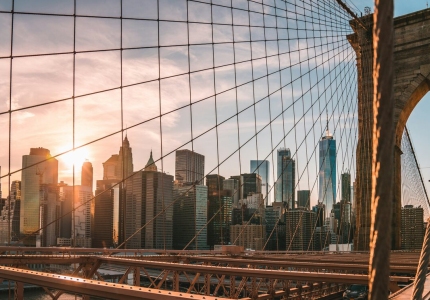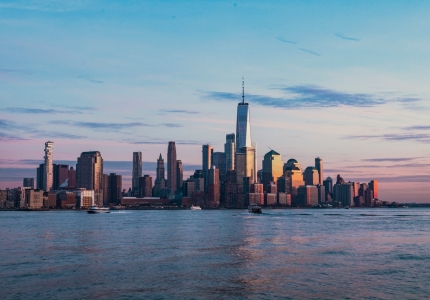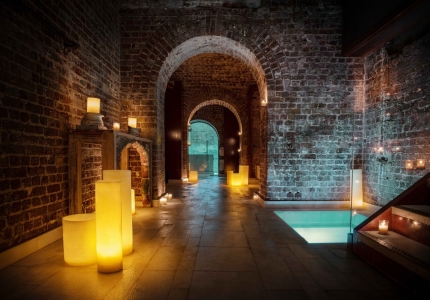Pulsing with medieval history and affluence, the neighborhood of El Born in La Ribera Quarter is one of Barcelona’s oldest medieval neighborhoods that, along with Barceloneta, Raval and Gothic Quarters, form the historic center of Barcelona.
A little bit of history
El Born is a small pocket in the neighborhood of Sant Pere, Santa Caterina and La Ribera, which is part of La Ribera Quarter. The area of El Born-La Ribera acquired great importance during medieval times and enjoyed great economic prosperity because of its strategic location near the sea. The word ‘Born’, which means enclosure, refers to the place where medieval knights held tournaments. The area got its name from ‘Mercat del Born’, which was the main local market of the area in 1847, and later became Barcelona’s principal fruit and vegetable market in 1920.
Things to do
From its majestic buildings to its bustling and diverse commercial activity, El Born has remained one of the most stylish neighborhoods in Barcelona. Here are some of the most iconic sites you won’t want to miss.
Picasso Museum
The Picasso Museum is living testimony of Pablo Picasso’s profound relationship with the city of Barcelona during his youth and adolescence. Home to more than 4,000 works, the Picasso Museum showcases a permanent collection that highlights the formative years of his lifelong career until the Blue Period. Here you can find his series ‘Las Meninas’ (1957), along with an extensive print and lithograph collection. Its main mission is to facilitate access and exposure to Picasso’s work and to be present in major exhibitions worldwide about his life and work.
Music Palace - Palau de la Musica
Palau de la Música Catalana is one of Barcelona’s architectural treasures. Chosen by UNESCO as a World Heritage Site in 1997, this fantastic building stands at the top of El Born and proudly distinguishes itself from the surrounding buildings. Built for Barcelona’s choir Orfeó Catalá, its interior showcases beautiful displays of stained glass, sculptures and ceramics. Its biggest and most famous space is the Concert Hall, with 2,146 seats under an elegant glass ceiling, and is the main venue for recitals and concerts. Its modern and younger sister hall, the Petit Palau, was built in 2004 with 538 seats and was specially created with great attention to its acoustic for chamber music concerts. Among its other spaces are the Lluís Millet Room, the ‘Segle XXI’ and the Chamber Music Hall, which are usually reserved for private and smaller events.
Santa Caterina Market
Santa Caterina Market is Barcelona’s first food market covered by a roof, and has provided local produce to the surrounding neighborhood as early as 1846. It was built over the Convent of Santa Caterina, from which it inherits its name. Its modern renovation began in 1997 and was completed in 2005. Intentionally created to be seen from the air, the undulating awning is covered with a colorful mosaic design by artist Toni Comella, representing the wide variety of vegetables and fruits and breaking with the visual aesthetic of other markets. In here you can find food stalls with fresh, quality local products, as well as a several tapas restaurants.
Santa Maria del Mar
Santa Maria del Mar is a splendid basilica that dates back to the 14th century. With its lofty interior, flat top octagonal towers and rib vaults, it is an exquisite example of Catalan-Gothic architecture. Previously named Santa Maria de Les Arenes by its earliest settlers, it was built during King Aragon’s prosperous maritime reign and renamed for its proximity to the sea. It has withstood numerous attacks throughout the centuries, among them the devastating fire during the Spanish Civil War in 1936, which destroyed its majestic baroque altar, along with its historical and image archive. Recent restorations have revitalized its essence, highlighting its sober yet exquisite Gothic qualities.
Culture Center
El Born Cultural and Memorial Centre is located in one of the most important architectural iron structures in Barcelona, formerly known as Mercat del Born. It was inaugurated in 2013 and was created primarily to promote and commemorate Barcelona’s national and local events through a variety of artistic and cultural activities that aim to preserve the memory and cultural history of Barcelona. El Born CC serves as a space that respects its archaeological value and as a place for learning and exchanging ideas and art. Here you can witness the remnants of life in the 18th century, enjoy a tasty meal in their restaurant “L'espai gastronòmic Moritz", attend concerts, conferences and forums, and explore their bookshop.
Shops
There is something for everybody in the streets of El Born. Bustling with boutiques and specialty shops in the area, ranging from interior design stores such as Ogetto to vintage shops like Le Swing and Blow, shopaholics will surely find plenty of options to fulfill their heart’s content.
How to get there
El Born is just a short walk from Les Rambles and the center of the city, located between Barceloneta and Via Laietana. It is accessible by the metro stops Jaume I and Barceloneta on the yellow L4 line.
AIRE Ancient Baths Barcelona
Next of this beautiful and historic neighborhood El Born there is a place where time does not exist: AIRE Ancient Baths. An old warehouse from the late 18th century, which has become a temple for the disconnection of the body and mind. A unique experience of maximum relaxation. Get ready to undertake an unforgettable journey of sensations that culminates with a relaxing massage or a sophisticated ritual. If you are planning to visit Barcelona, AIRE Ancient Baths should be in your bucket list!
If you’ve enjoyed this post, you can try Best vegan restaurants in Barcelona.



